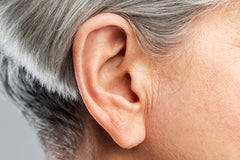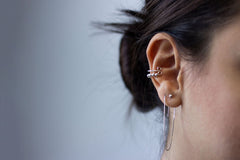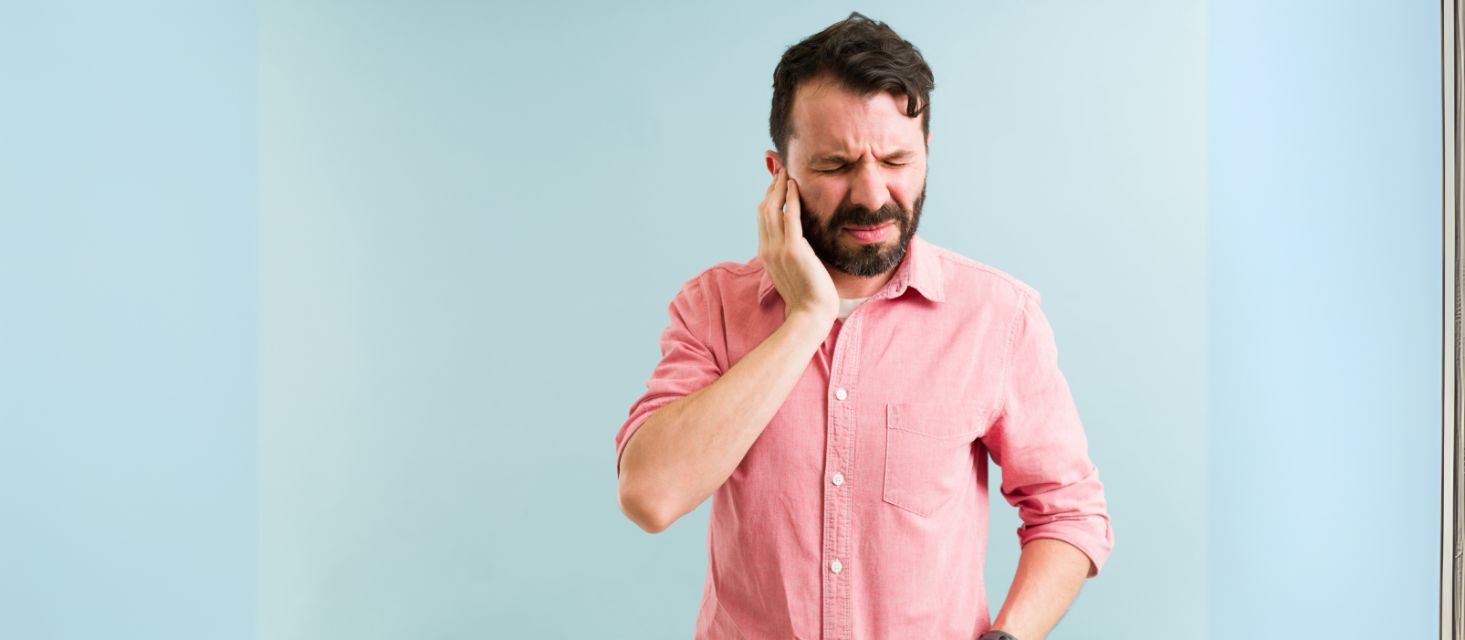Q-tips may be satisfying, but are they safe for your delicate ears?
There are many ways to get rid of earwax, but which method is the best? At Auracle, we've discussed five of the most common solutions. We will list each method with a rating based on safety and convenience, from worst to best.
|
Method |
Pros |
Cons |
Rating |
|---|---|---|---|
|
Ear Candling |
Natural Approach Relaxation |
No Scientific Backing Risk of Burns and Injury False Sense of Cleaning |
☆ |
|
Cotton Swabs |
Accessibility
Ease of Use
Surface Level Cleaning |
Risk of Impaction
Ear Canal Damage
Not Effective for Deep Cleaning |
☆☆ |
|
Ear Drops |
Softening Ear Wax
Non-Invasive
Variety of Options |
Potential Allergies
Ineffective by Itself
Overuse Issues |
☆☆☆ |
|
Professional Medical Cleaning |
Safety and Effectiveness
Customized Approach
Comprehensive Examination |
Cost
Inconvenience
Not Regularly Needed |
☆☆☆☆ |
|
Ear Irrigation |
Effective for Wax Buildup
Comprehensive Cleaning
Controlled Pressure |
Risk of Infection
Complexity
Not Suitable for Children |
☆☆☆☆☆ |
1. Ear Candling
Rating: ☆
This method involves placing a special candle in the ear and lighting it. This holistic practice aims to draw out earwax.
Pros:
-
Natural Approach: This method is popular among those who prefer natural or holistic health practices.
-
Relaxation: Many find the process of ear candling to be a soothing experience, often performed in a relaxing environment.
Cons:
-
No Scientific Backing: There is no solid scientific evidence supporting the effectiveness of ear candling in removing ear wax.
-
Risk of Burns and Injury: The use of a lit candle near the face poses a significant risk of burns or fire.
-
False Sense of Cleaning: The residue left after candling if often mistaken for ear wax, but it is typically a remnant of the candle itself.
Despite its natural and relaxing approach, ear candling is not recommended due to safety concerns. There is a significant risk of burns and injury, and the method lacks scientific backing for its efficacy. Ear candling is both unsafe and not particularly easy for effective earwax removal.
2. Cotton Swabs (Q-Tips)
Rating: ☆☆
This method involves using small, cotton-tipped sticks to clean the outer ear. They may be effective for the outer ear, but many mistakenly insert Q-Tips into the ear canal.
Pros:
-
Accessibility: Cotton swabs are widely available in supermarkets and pharmacies, making them a convenient option for many people.
-
Ease of Use: Their simple design means they can be used without any special training or preparation.
-
Surface Level Cleaning: Cotton swabs are better in cleaning surface level areas, like the outer ear and earlobe.
Cons:
-
Risk of Impaction: Inserting cotton swabs into the ear canal can push wax deeper, potentially leading to blockages and hearing issues.
-
Ear Canal Damage: The ear canal's skin is delicate, and swabs can easily cause scratches or irritation, leading to discomfort or infection.
-
Not Effective for Deep Cleaning: Cotton swabs are not designed to clean inside the ear canal and can miss deeper wax accumulations.
While cotton swabs are extremely easy to use and widely accessible, they are not safe for deep ear canal cleaning. Use of Q-Tips can lead to impaction and ear canal damage, making them unadvisable for internal ear wax removal.
3. Ear Drops
Rating: ☆☆☆
Ear drops involve instilling liquid solutions into the ear to soften and break down earwax. Various types are available, catering to different needs.
Pros:
-
Softening Ear Wax: Ear drops may soften hard wax, allowing for an easier natural exit from one's ear canals or a safer removal.
-
Non-Invasive: This method doesn't involve inserting any object into the ear, reducing the risk of physical damage.
-
Variety of Options: There are many types of ear drops available, including natural oil-based options, which cater to different preferences and needs.
Cons:
-
Potential Allergies: Ingredients in some ear drops can cause allergic reactions, leading to itching or irritation.
-
Not as Effective by Itself: Whilst the process is relatively simple, it is much more effective when paired with other forms of cleaning such as ear irrigation.
-
Overuse Issues: Frequent use of ear drops can disrupt the natural environment of the ear, leading to potential irritations or infections.
Ear drops are safe and non-invasive, making them a good choice for individuals looking to soften earwax without physical intervention. However, the need for another method to be used alongside ear drops and potential for allergic reactions may make them less convenient for some users.
4. Professional Ear Cleaning
Rating: ☆☆☆☆
Conducted by healthcare professionals using specialized tools, this method is tailored to individual needs.
Pros:
-
Safety and Effectiveness: Performed by trained professionals, this method ensures safe and effective removal of ear wax.
-
Customized Approach: Medical professionals can tailor the cleaning method to suit individual ear conditions and wax buildup levels.
-
Comprehensive Examination: Professional cleaning often includes an examination, which can identify any underlying ear issues.
Cons:
-
Cost: Professional cleaning is more expensive than at-home methods, lessening its accessibility.
-
Inconvenience: This method requires scheduling an appointment and visiting a clinic, potentially leading to a worsening of an existing issue or encounters with long waiting lists.
-
Not Regularly Needed: For most people with normal ear wax production, professional cleaning is not necessary on a regular basis.
Whilst professional ear cleaning is the safest option, it is not very convenient due to the need to book an appointment and pay a higher cost for treatment. Is not recommended as a way to regularly clean ears due to its high price and often not necessary.
5. Ear Irrigation
Rating: ☆☆☆☆☆
This method uses a gentle stream of water or saline solution to flush out earwax. It's effective for removing larger accumulations or regular cleaning.
Pros:
-
Effective for Wax Buildup: These kits can flush out large chunks of ear wax that cannot be reached by other methods.
-
Comprehensive Cleaning: The irrigation process can clean the entire ear canal, offering thorough cleaning compared to surface methods.
-
Controlled Pressure: These kits are designed to safely regulate water pressure, minimizing the risk of damage to the ear.
Cons:
-
Risk of Infection: Water used in ear irrigation can introduce bacteria, potentially leading to ear infections if not done correctly.
-
Complexity: The process requires specific steps and care, making it more complex compared to other methods.
-
Not Suitable for Children: Children should not use ear irrigation by themselves, as it could lead to injury if not used correctly.
Ear irrigation is a safe method when performed correctly, offering a more comprehensive cleaning than surface methods. However, the method is highly dependent on the device used, as low-quality options tend to lack safety measures and can even lead to infections. Industry-certified devices such as the Auracle Eddy can solve these issues and are able to be used regularly.
Conclusion
Overall, the best method for removing earwax varies based on individual needs and circumstances. For regular maintenance, quality ear irrigation kits are effective and safe options. For more significant wax buildup or specific ear conditions, professional medical cleaning is advisable. It's always recommended to consult with a healthcare professional before choosing an ear cleaning method, especially for those with existing ear conditions or concerns.








Share:
Related Blogs
When Should I Clean My Ears? A Guide to Ear Wax Removal
Earwax Blockage: Symptoms and Treatment